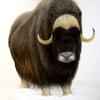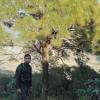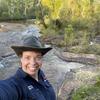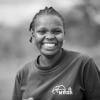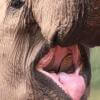With new technologies revolutionizing data collection, wildlife researchers are becoming increasingly able to collect data at much higher volumes than ever before. Now we are facing the challenges of putting this information to use, bringing the science of big data into the conservation arena. With the help of machine learning tools, this area holds immense potential for conservation practices. The applications range from online trafficking alerts to species-specific early warning systems to efficient movement and biodiversity monitoring and beyond.
However, the process of building effective machine learning tools depends upon large amounts of standardized training data, and conservationists currently lack an established system for standardization. How to best develop such a system and incentivize data sharing are questions at the forefront of this work. There are currently multiple AI-based conservation initiatives, including Wildlife Insights and WildBook, that are pioneering applications on this front.
This group is the perfect place to ask all your AI-related questions, no matter your skill level or previous familiarity! You'll find resources, meet other members with similar questions and experts who can answer them, and engage in exciting collaborative opportunities together.
Just getting started with AI in conservation? Check out our introduction tutorial, How Do I Train My First Machine Learning Model? with Daniel Situnayake, and our Virtual Meetup on Big Data. If you're coming from the more technical side of AI/ML, Sara Beery runs an AI for Conservation slack channel that might be of interest. Message her for an invite.
Header Image: Dr Claire Burke / @CBurkeSci

Explore the Basics: AI
Understanding the possibilities for incorporating new technology into your work can feel overwhelming. With so many tools available, so many resources to keep up with, and so many innovative projects happening around the world and in our community, it's easy to lose sight of how and why these new technologies matter, and how they can be practically applied to your projects.
Machine learning has huge potential in conservation tech, and its applications are growing every day! But the tradeoff of that potential is a big learning curve - or so it seems to those starting out with this powerful tool!
To help you explore the potential of AI (and prepare for some of our upcoming AI-themed events!), we've compiled simple, key resources, conversations, and videos to highlight the possibilities:
Three Resources for Beginners:
- Everything I know about Machine Learning and Camera Traps, Dan Morris | Resource library, camera traps, machine learning
- Using Computer Vision to Protect Endangered Species, Kasim Rafiq | Machine learning, data analysis, big cats
- Resource: WildID | WildID
Three Forum Threads for Beginners:
- I made an open-source tool to help you sort camera trap images | Petar Gyurov, Camera Traps
- Batch / Automated Cloud Processing | Chris Nicolas, Acoustic Monitoring
- Looking for help with camera trapping for Jaguars: Software for species ID and database building | Carmina Gutierrez, AI for Conservation
Three Tutorials for Beginners:
- How do I get started using machine learning for my camera traps? | Sara Beery, Tech Tutors
- How do I train my first machine learning model? | Daniel Situnayake, Tech Tutors
- Big Data in Conservation | Dave Thau, Dan Morris, Sarah Davidson, Virtual Meetups
Want to know more about AI, or have your specific machine learning questions answered by experts in the WILDLABS community? Make sure you join the conversation in our AI for Conservation group!
No showcases have been added to this group yet.
Co-founder @ Behold
- 0 Resources
- 4 Discussions
- 6 Groups
- @Lilli
- | she/her
Ocean nerd, personally and professionally 🌊Engagement Coordinator for FathomNet and FathomVerse
- 2 Resources
- 3 Discussions
- 7 Groups
Sea Mammal Research Unit Univ' St Andrews
I work in marine bioacoustics with a focus on the conservation of marine mammals. Most of the time I'm developing and using passive acoustic technology to study the underwater behaviour of dolphins and porpoises. I'm also a keen developer on the PAMGuard project.



- 0 Resources
- 23 Discussions
- 6 Groups
BirdLife International
I deliver policy and advocacy components of cross-regional projects and initiatives concerning international site-based conservation, including through international mechanisms such as the Ramsar Convention, Convention on Migratory Species (CMS) and World Heritage Convention.
- 0 Resources
- 0 Discussions
- 4 Groups
- @billoxbury
- | he/him
Mathematician and data/AI scientist, interested in environmental applications; wildlife photographer and volunteer.
- 0 Resources
- 0 Discussions
- 1 Groups
- @TheDataEnthusiastic
- | He/Him
Hi, I'm pursuing Master's in Data Science. And I want work help protect nature and wildlife.
- 0 Resources
- 0 Discussions
- 13 Groups
World Wide Fund for Nature/ World Wildlife Fund (WWF)

- 0 Resources
- 12 Discussions
- 15 Groups
- @Alejandro
- | He
This climate crisis does not have to be a story of loss but rather a story of redemption, rebirth, and change. My paintings capture the spiritual nature, the grounding energy of our shared existence with the natural world. AML-ART.COM
- 0 Resources
- 0 Discussions
- 3 Groups
- @jodirowley
- | she/her
Conservation biologist obsessed with frogs
- 1 Resources
- 0 Discussions
- 5 Groups
Sound art and design
- 0 Resources
- 1 Discussions
- 2 Groups
- @apcxs
- | He, his, them
- 0 Resources
- 0 Discussions
- 11 Groups

- 1 Resources
- 5 Discussions
- 9 Groups
As we celebrate World Oceans Day this month, we are reminded that addressing climate change will take more than any one organization. It will require companies, governments, NGOs and communities, all working together,...
9 June 2023
This May, AI for the Planet Alliance announced the Winners and Finalists for its 2022 call for solutions focused on advancing promising AI solutions that combat climate change and we think you should check them out!
25 May 2023
In this Conservation Tech Showcase case study from Happywhale, you’ll learn about how AI tools are helping researchers and citizen scientists identify and protect humpback whales.
16 May 2023
The new role will support the growth of BioSciences’ new People and Nature Laboratory at UCL East through conducting cross-disciplinary research, teaching, outreach, and entrepreneurial activities in applied ecological...
16 May 2023
Are you using or creating tech to protect wildlife? We want to support your organization through two $15,000 grants!
15 May 2023
How can you use tools like photo quadrats, AI, and MERMAID together? We share an example overview of how WCS Staff in Mozambique use image classification tools with MERMAID to integrate photo quadrat and other coral...
12 May 2023
We've now wrapped our 2023 AI for Conservation Office Hours, where we helped conservationists connect with AI experts to get tailored expert advice on AI and ML problems in their projects
11 May 2023
Why you should know about Kenya-founded data analytics company - Gro Intelligence, arguably the largest funded tech startup within the African startup ecosystem and the only platform that brings together live, global...
5 May 2023
Here's an innovative project from the Harvey Mudd College Bee Lab that could help us understand how bees view their environments, and thus better protect bee habitat. This project uses computer vision and drone imagery...
5 May 2023
3 year position - Trondheim, Norway
2 May 2023
Article on www.nationalgeographic.com
27 April 2023
August 2025
event
September 2025
event
event
event
event
October 2025
event
event
event
December 2025
event
March 2026
September 2023
August 2023
17 Products
Recently updated products
| Description | Activity | Replies | Groups | Updated |
|---|---|---|---|---|
| Dan's comments about the need for technologists and conservationists to manage and share (properly annotated) data struck a chord with me, it was right at the end of the... |
|
AI for Conservation, Data management and processing tools | 4 years 6 months ago | |
| Hi Alex, that sounds great! Feel free to email me at luisa.teixeira@vizzuality.com, that may be simpler. |
|
AI for Conservation | 4 years 6 months ago | |
| Hi. Just watched the Youtube version (I'm in the unable to watch live hemisphere) and wanted to say that was a great talk. I wish it could have gone for another hour. I liked... |
|
AI for Conservation, Camera Traps | 4 years 6 months ago | |
| The IUCN Otter Specialist Group is hosting a Virtual Eurasian Otter Workshop on 26-28.February.2021. There will be invited talks and... |
|
AI for Conservation, Camera Traps, eDNA & Genomics | 4 years 6 months ago | |
| I know I'm very late, but I only discovered this recently. Is your team still active/accepting new members? |
+24
|
AI for Conservation | 4 years 7 months ago | |
| Hi @pmnguyen1224 , thanks for reaching out and checking out the system! We would love to help ensure that you're able to get pattern matching to work for... |
|
Acoustics, AI for Conservation | 4 years 7 months ago | |
| Hi Andrew, Yo need to train a lightweight DNN model for bird flocks which can then be deployed on Raspberry Pi. For initial starters, you can look into the below tutorial:... |
|
AI for Conservation | 4 years 8 months ago | |
| This is great, thanks for sharing. |
|
AI for Conservation | 4 years 9 months ago | |
| Dear Zoe, I wonder whether FIT would be good for species-level (rather than individual level) identification of small mammals. We use track tunnels to get prints of dormice (3... |
|
AI for Conservation, Emerging Tech | 4 years 9 months ago | |
| AI for Climate Forum: Lightning Talks Bonnie Lei, Microsoft AI for Earth - 4pm GMT, October 30 Register here: https://us02web.zoom.us/webinar/register/... |
|
AI for Conservation | 4 years 9 months ago | |
| Hi Wildlabbers, Just popping in to share this very cool primer for beginners to embedded machine learning from our tutor Daniel Situnayake! If you're interested in... |
|
AI for Conservation, Camera Traps | 4 years 10 months ago | |
| Hi Ellie, thanks for your interest. So I have two possible explanations why the camera traps I used did not release, even though I found otter droppings directly in front of my... |
|
AI for Conservation, Animal Movement | 4 years 11 months ago |




